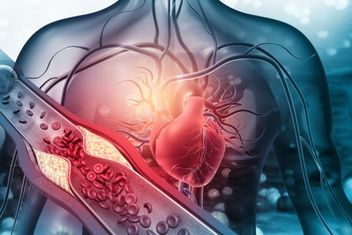Experiment #4 - Optimize Antibody Incubation Time
After fine-tuning the antibody-particle ratio it is important to optimize the incubation time – the amount of time between antibody addition and quenching. In circumstances where you are limiting the number of antibodies per particle rather than saturating the surface (e.g. competitive assays), we generally recommend a shorter incubation time (as short as 5 minutes) before quenching.
Decreasing incubation time reduces the chances for antibodies to fold and bind to several available acid groups on the particle surface, which can reduce antibody functionality. Fortis Life Science standard protocols use a 1-hour incubation time.
This protocol will examine 30-minute, 1-hour and 2-hour incubation times.

Technical Notes
For competitive-format assays where it is desirable to limit the number of antibodies per particle, we recommend sweeping antibody incubation times of 5, 15, and 30 minutes.
Materials
We recommend using the following - or similar - materials:
- DI water
- 3 × 1.5 mL LabCon® test tubes
- 3 mL BioReady™ 150 nm Carboxyl Gold Nanoshells, 20 OD
- 1 mL each aliquoted into 3 × 1.5 mL LabCon® tubes (provided)
- Reaction buffer selected in Conjugate Optimization #1
- EDC: 10 mg aliquot
- Sulfo-NHS: 10 mg aliquot
- Hydroxylamine solution
- Conjugate diluent
- Microcentrifuge
- Rotator or end-over-end mixer for antibody incubation
Antibody Incubation Time Protocol
- Remove 1 × 10 mg aliquot of EDC and 1 × 10 mg aliquot of sulfo-NHS from cold storage and allow it to come to room temperature prior to use (~20 minutes).
- Thoroughly shake the BioReady™ 150 nm Carboxyl Gold Nanoshells to disperse particles and aliquot 1 mL particles into three separate tubes. Label tubes “A”, “B”, and “C”.
IMPORTANT: Steps 3–6 should be completed within 5 minutes of solubilizing EDC and sulfo-NHS to minimize hydrolysis of the sulfo-NHS ester in water and enhance the efficiency of conjugation. - Pipette 1 mL of fresh DI water into the 10 mg aliquot of EDC for a final concentration of 10 mg/mL. Vortex for 10 seconds.
- Add 8 µL of 10 mg/mL EDC to all three 1 mL aliquots of BioReady™ 150 nm Carboxyl Gold Nanoshells.
- Pipette 1 mL of fresh DI water into the 10 mg aliquot of sulfo-NHS for a final concentration of 10 mg/mL. Vortex for 10 seconds.
- Add 16 µL of 10 mg/mL sulfo-NHS to all three 1 mL aliquots of BioReady™ 150 nm Carboxyl Gold Nanoshells.
- Vortex each solution and incubate at room temperature for 30 minutes while mixing.
- After a 30-minute incubation, balance tubes in a microcentrifuge and spin at 2.0k RCF for 5 minutes.
- Carefully remove supernatant (~950 µL) to remove any excess EDC/sulfo-NHS and resuspend each pelleted nanoparticle with 1 mL of reaction buffer selected in Conjugate Optimi-zation Step #1. Vortex and/or sonicate (< 30 seconds) to fully resuspend particles.
- Add the amount of antibody selected in Conjugation Optimization Step #2 to each 1 mL tube of activated gold nanoshells.
- Vortex each solution and incubate at room temperature for the following time increments with adequate mixing:
- 30 minutes
- 1 hour
- 2 hours
Note: In cases where the antibody loading is < 20 µg per 20 OD mL of gold nanoshells, modify the incubation times to 5 minutes, 30 minutes, and 1 hour. - After each individual incubation, add 5 µL of hydroxylamine quencher to deactivate any remaining active NHS-esters. Vortex and incubate at room temperature for 10 minutes while rotating on a mixer.
Note: Observe the tube and the color of the conjugates after quenching and compare to the “parent” unconjugated material. A lighter blue or the presence of black “specks” is a sign of colloidal instability. - Centrifuge tubes at 2.0k RCF for 5 minutes and carefully remove supernatant. Resuspend pellet with 1 mL of reaction buffer. Vortex and/or sonicate to fully resuspend conjugate.
- Repeat centrifugation and resuspension step #13 to remove any excess antibody.
- Centrifuge one final time at 2.0k RCF for 5 minutes. Remove supernatant and bring volume of pellet up to 1 mL in conjugate diluent. Vortex and/or sonicate to fully resuspend conjugate.
- Store conjugate at 4°C. Do not freeze.
Optimal Antibody Incubation Time Selection
Compare the UV-Vis spectra before and after conjugation to ensure all conditions yielded stable conjugates. If using lateral flow as a functional readout, run the conjugate on a test strip and measure the performance. Select the antibody incubation time that resulted in the best colloidal stability, lowest non-specific binding, and highest positive signal intensity. If all three antibody incubation times perform equally, we recommend moving forward to the next optimization step with the 30-minute antibody incubation time.
By clicking “Acknowledge”, you consent to our website's use of cookies to give you the most relevant experience by remembering your preferences and to analyze our website traffic.
